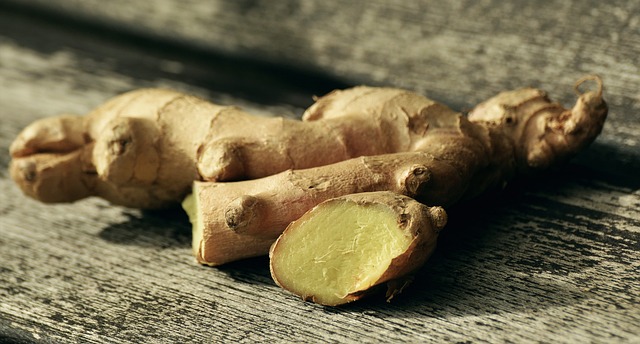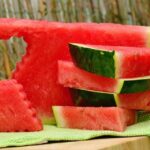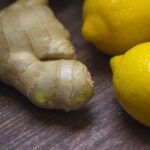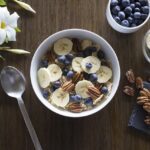The sensation of nausea is defined as a stomach discomfort that frequently arises prior to throwing up. It is an unpleasant feeling that normally precedes a rush to the bathroom, with fingers crossed that one can reach it in time, covering the mouth. Whether one has already experienced vomiting or senses its onset, eating is not a top priority. Nevertheless, foods suitable for a queasy stomach may aid in relieving nausea.
After exploring medical research and consulting with professionals, we have discovered an abundance of nausea treatments, including both conventional and unexpected food remedies that have been backed by science.
1. BRAT Diet
Orimenko suggests that the BRAT diet consisting of banana, rice, apple sauce, and toast, which are light and easy to digest, are the ideal foods to consume when experiencing nausea.
When treating patients recovering from vomiting and diarrhea, doctors often recommend the BRAT diet. This diet is thought to be effective because its low fiber content, along with bananas’ potassium, helps to re-bind stool and replenish the nutrients that were lost during the gastrointestinal illness.
The BRAT diet is not meant to provide a permanent resolution for gastrointestinal issues as it does not consist of the necessary nutrients, fats, and proteins essential for a well-balanced diet. It is recommended to adhere to the BRAT diet for a maximum of 24-48 hours to guarantee that your body is receiving all the essential nutrients it requires.
2. Bitters
According to Orimenko, naturopaths have a saying that goes, “Unpleasant taste, positive effect on digestion.” He explains that bitters, which have been utilized as digestive aids for centuries, can prompt the production of saliva and digestive enzymes. This promotes stomach emptying and helps to alleviate queasiness.
The German Commission E, which is responsible for assessing the effectiveness and safety of medicinal herbs, approves of bitters (specifically gentian and wormwood) as a treatment for dyspepsia (commonly known as indigestion).
What does Orimenko suggest? Orimenko suggests Herb Pharm Better Bitters, which is a blend of orange peel, burdock root, gentian, star anise, ginger, and artichoke leaf. This formula aids digestion and is made with organic cane alcohol and vegetable glycerin.
3. Ginger
When ginger is mentioned, it evokes thoughts of its association with aiding digestion throughout history. The presence of gingerols and shogaols in ginger provide its distinct taste and scent while also contributing to its ability to reduce nausea and inflammation.
Numerous medical studies have demonstrated the effectiveness of ginger in easing symptoms of nausea and vomiting, particularly in cases of morning sickness and nausea and vomiting caused by chemotherapy.
Ingesting ginger is commonly considered safe and there are no significant food or medication interactions, in addition to its proven effectiveness in soothing upset stomachs.
4. Lemon
Swiner recommends incorporating ginger, peppermint, lavender, or lemon into your diet as they have been found to alleviate feelings of nausea. The flavors of these ingredients have a distracting effect on the brain, leading to a calmer stomach. Even though lemons are often associated with relieving morning sickness, they can also be helpful in easing other forms of nausea.
Have your lemons in your preferred way as they aid in detoxification of the body. You can have them as a tea wedge, use them in lemonade, or even inhale their scent if you don’t feel hungry. Surprisingly, according to a 2014 research, just the aroma of a fresh lemon helped reduce nausea and vomiting among expectant mothers.
5. Foods that lack flavour
According to Swiner, it is recommended to stick to rice and bananas for a bland diet. Similar to the BRAT diet, foods that are soft and low in fiber such as tofu, farina, and baked potatoes are easier for the gastrointestinal system to process. Orimenko advises against consuming dense and difficult-to-digest foods like beef, nut butters, fried foods, casseroles, pasta, and cream-based dishes when experiencing nausea.
It is logical that when you experience nausea, you should opt for dull and non-sour foods.
To worsen indigestion, it’s best to stay away from alcohol, caffeine, chocolate, garlic, and tomatoes since they can relax the lower esophageal sphincter. Swiner recommends avoiding dairy and very acidic or spicy foods because they can aggravate nausea, vomiting, diarrhea, and abdominal pain.
6. Apples
Fiber found in apples aids in the faster removal of toxins from your body. Additionally, it slows down and facilitates digestion, which could potentially alleviate nausea. Nonetheless, consuming excessive fiber from any source could worsen the feeling of nausea. It is recommended to consume either a whole apple or apple slices in case swallowing becomes problematic. Otherwise, an individual can choose to consume apple juice or applesauce as an alternative.
7. Mint
Swiner, like many others, drinks mint tea to alleviate their discomfort when they’re not feeling well. According to her, consuming mint or sour foods helps to reduce her nausea by distracting her from the sensation of illness.
Fresh mint leaves are recommended for relieving nausea as they facilitate the flow of bile in our digestive tract. This aids in the optimal functioning of all the stomach processes. Alternatively, you can also chew on fresh mint leaves.
Additionally, if you are not inclined to consume food or beverages, utilizing mint essential oils for aromatherapy could prove useful. Research conducted on over 300 patients who reported experiencing post-operative nausea discovered that their symptoms had reduced after receiving aromatherapeutic treatment containing a mix of oils encompassing peppermint oil.
8. Crackers
It is hardly surprising that crackers are a reliable remedy for nausea. Your mother might have recommended them to you when you were unwell, and this food item still remains your go-to option when things get rough. The science behind this phenomenon explains why crackers are so effective.
The reason why saltines and graham crackers can alleviate nausea is that they contain high levels of starch, comparable to toast or pretzels. This starch aids in the absorption of stomach acids and soothes the digestive tract. In 2015, a research study focusing on gastroparesis, a disorder that disrupts the normal stomach-emptying process, found that these crackers were able to lessen symptoms such as nausea.
9. Cold Foods
For many, nausea and a sensitivity to smells go hand in hand. One way to bypass this is to reach for cold foods, as they’re typically less aromatic than hot foods.
Another reason why tasteless snacks can be appealing during nausea is because they ease hunger, which is one of the reasons behind the feeling, without overwhelming the senses with strong flavors or scents. An alternative option would be to opt for ice pops, Jell-O, ice cream, or consuming ice cubes to prevent worsening of nausea with overpowering smells.
10. Broths
From headaches to colds to fevers, both chicken broth and chicken soup are popular home remedies.
When experiencing nausea, it is often easier to handle fluids rather than solid food. Therefore, consuming broths and soups can be a beneficial initial approach to resuming eating. Additionally, they supply necessary hydration and electrolytes, which prove especially crucial in the cases of having vomited or having a fever.
Including chicken or vegetables in your broth can provide your body with extra calories, protein, vitamins, and minerals to replenish your energy. One cup (240 ml) of chicken broth contains 40% of the daily value (DV) for sodium, 3% of the DV for niacin, and less than 1% of the DV for potassium.
Furthermore, in case your queasiness is due to a cold or congestion, hot broth can offer solace from indications. Broths and soups furnish you with hydration and electrolytes, making them an ideal initial move towards eating more stable foods again, particularly when you feel nauseous or have encountered vomiting.
11. Bananas
It can be challenging to consume a substantial amount of food when experiencing nausea.
It is crucial to consume nourishing foods that provide energy to help your body recuperate and stay resilient, especially if you are battling chronic nausea and trying to manage your weight.
A snack that is rich in nutrients and gives energy are bananas. They are effortless to consume, especially when unwell. Furthermore, they replenish the lost potassium from vomiting or diarrhea. With just a medium-sized banana, you get 105 calories, 27 grams of carbohydrates, 9% of the necessary daily potassium, and 25% of your vitamin B6 requirements.
Avocados, porridge, stewed fruits, mashed potatoes, and peanut butter are examples of soft, energy-dense foods. When experiencing nausea or suffering from vomiting or diarrhea, bananas can provide energy and vitamins while also replenishing potassium levels.
12. Applesauce
People who have nausea or diarrhea often turn to applesauce as a go-to food for relief. It is one of the staples of the BRAT diet, which stands for bananas, rice, applesauce, and toast. This diet used to be extensively recommended for individuals with gastrointestinal upsets, especially in children. Although it is now perceived as excessively restrictive, several people still find these foods helpful.
During chemotherapy, consuming a mild and insipid diet consisting of applesauce, cottage cheese, and vanilla ice cream has been shown to increase food consumption and decrease vomiting and nausea in individuals. Applesauce, being a stomach-friendly carbohydrate, is a beneficial food choice.
Unsweetened applesauce, weighing 122 grams or half a cup, provides around 50 calories and 14 grams of carbohydrates. In addition, its richness in pectin, a dietary fiber, can be advantageous for individuals facing nausea and diarrhea.
People experiencing nausea and diarrhea frequently resort to consuming applesauce, which is rich in energy and carbohydrates and often well-tolerated even during periods of ill health.
13. Rice, potatoes, and noodles
When experiencing nausea, it is advisable to opt for starchy, uncomplicated dishes such as rice, potatoes, and noodles. These options are not only simple to cook but also rich in calories and have a settling effect on the stomach. Additionally, unseasoned and dull-looking foods are typically more tolerable for the body since they do not evoke nausea as strongly as strongly flavored foods.
Rice can be prepared through boiling or steaming and consumed either plain or with mild spices. Additionally, it can be consumed cold if hot meals are unappetizing. Conversely, potatoes can undergo boiling, steaming, baking, or mashing with the addition of butter and milk to acquire more calories.
Noodles are versatile as they can be consumed plain after boiling or added to a light broth or sauce to increase fluid intake. When feeling nauseous, it’s best to opt for a bland and starchy food option. These foods are mild in taste and scent, and provide a comforting source of calories.
14. Protein-rich meals
There have been a limited number of studies examining how the macronutrient content of meals impacts nausea. A study conducted on pregnant individuals discovered that meals containing high levels of protein considerably alleviated nausea symptoms in comparison to those that contained higher levels of carbohydrates or fats.
In addition, during the study on motion sickness, participants were provided with a beverage containing either protein or carbohydrates before being spun in a revolving drum. It was found that the drinks containing protein were the most successful in reducing symptoms of nausea.
A different research on individuals receiving chemotherapy disclosed that the concurrent use of ginger and protein supplements was able to diminish feelings of nausea. The exact rationale behind protein’s ability to alleviate nausea remains uncertain. One theory is that it aids in the management of stomach function by boosting the secretion of the hormone gastrin.
For individuals suffering from chronic sickness that causes nausea, consuming meals that are rich in protein is crucial as this nutrient assists in fortifying the body and abating the possibility of malnourishment. In comparison to meals that are high in carbohydrates or fat, protein-rich meals have a greater effect on alleviating nausea. Protein can also aid in regulating stomach function by prompting an increase in the secretion of gastrin.
15. Herbal tea
Nausea is often treated with herbal tea, which is a prevalent practice. According to a study, 21.7% of gynecologists suggest it to pregnant women who experience nausea. Nonetheless, there is no scientific substantiation to support these assertions. Studies have mainly focused on peppermint and chamomile’s specific compounds in capsule or aromatherapy versions.
Peppermint aromatherapy was discovered to alleviate nausea among those who had undergone open-heart surgery whereas a blend of peppermint and lemon aromatherapy also produced a similar result in expectant women.
Although there is no scientific backing, numerous individuals experiencing nausea discover that they can tolerate herbal teas. To alleviate nausea, consider sipping on peppermint tea or incorporating a lemon slice into boiling water. Even if the herb alone doesn’t help, the fluids can assist with hydration when feeling sick.
Even though peppermint and chamomile have been proven to alleviate nausea when taken in capsule or aromatherapy form, there is no scientific proof that consuming herbal teas reduces nausea. Notwithstanding, numerous individuals find them comforting, and they furnish hydration.
Other tips for treating nausea
Besides consuming certain foods and beverages, you can take other steps to relieve your nausea:
- Eat something small every 1–2 hours. Avoid skipping meals, since an empty stomach can worsen nausea.
- Eat and drink slowly and in small amounts. This allows you to relax during meals and take time to enjoy your food. You may also want to avoid consuming liquids and solids at the same time.
- Do not lie flat after eating. Avoid lying down for at least 30 minutes after eating, as this can put pressure on your stomach, making nausea worse.
- Avoid food preparation. The smell while cooking and preparing food can worsen nausea. If possible, avoid or shorten the time spent in the kitchen.
- Keep your mouth clean. Nausea and vomiting can leave an unpleasant taste in your mouth, which may prevent you from eating. Rinse and brush your teeth regularly and use sugar-free mints to keep feeling fresh.
Furthermore, it is advisable to steer clear of the subsequent categories of edibles if you experience queasiness:
- fatty, greasy, or fried foods
- very sweet foods
- spicy foods
- foods with strong odors
- alcohol
- caffeine
To alleviate nausea, you can follow certain measures like refraining from consuming particular foods, eating frequent small meals, separating liquids and solids, avoiding cooking, sitting upright after eating, and maintaining oral hygiene.
Side notes
Feeling nauseous is a highly unpleasant feeling that can lead to difficulties in consuming, digesting, and retaining food. It appears that some foods are easier for those experiencing this sensation to tolerate than others, such as plain rice, pasta, potatoes, salty crackers, and chilled foods.
Adding ginger, certain teas, and protein-rich meals to your diet may alleviate nausea symptoms. It is crucial to prioritize adequate hydration by consuming ample water and electrolyte-rich drinks when feeling unwell.
Eating these foods can help you stay nourished during times of illness and also promote long-term health.



